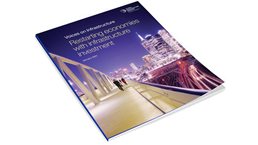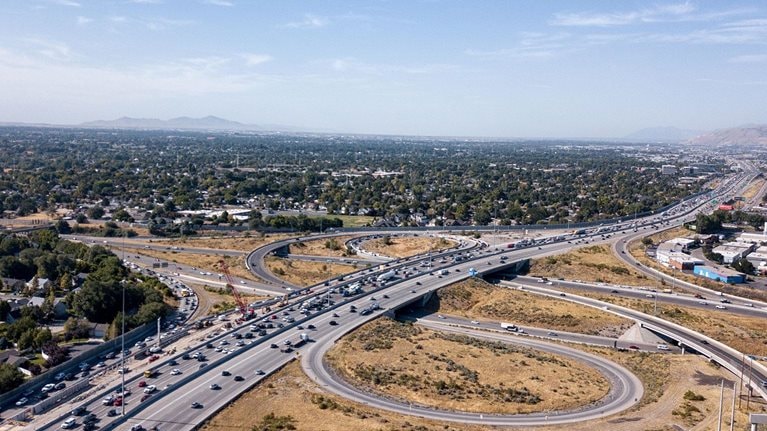Bidding on capital projects requires a reliance on certain assumptions: when the work will start, what suppliers will be available, how much materials will cost, how productive the labor will be, and so forth. COVID-19 has thrown to the wind many of the formulas for making these assumptions. Supply chains are disrupted, work rules are changing, and the industry is forced to keep up despite the uncertainty.
As both private and public infrastructure project owners have revisited their project pipelines,1 tendering competition has grown fierce. Many engineering and construction (E&C) firms, starved for the work necessary to maintain cash flow and backlog, are throwing their hats into more rings than usual—and often quoting projects at increasingly aggressive prices, sometimes seemingly below cost. And while owners may initially be tempted by the competition-induced fall in prices, caution is warranted.
Engineering and construction firms see disruption in bidding
In a survey of E&C firms from across industries and geographies fielded in September 2020, 89 percent of respondents said they have changed how they approached bids (exhibit). The plurality of those that have changed their approach indicated more willingness to explore alternative contracting methods, while one-third acknowledged a change in their pricing approach. This is likely a competitive response, as 82 percent of respondents said they have seen the nature of the competition change—namely in the form of more competitors and aggressive pricing at or below cost. One respondent noted, “Competitors are bidding low and are desperate for cash and work continuity.”

Would you like to learn more about our Operations Practice?
For owners hoping to keep work going during tough times—especially public infrastructure owners that have received funding infusions with relief packages—these may sound like good conditions to complete projects in a time when the economy is thirsting for jobs and any form of growth. The head of capital programming for a large metropolitan transportation agency noted that, since May, bids have been coming in as much as 30 percent lower than internal estimates. However, accepting such bids also invites a level of risk that may leave owners holding the bag in the medium to long term. While owners are initially excited to award a project for less than they budgeted, this exposes them to a higher risk, as the E&C firm will need to find other ways to make the project profitable—or else risk financial distress that can threaten the project already in progress.
What owners need to do
Supporting a healthy pool of engineering, construction, and specialty-service firms with the right balance of skills, risk-taking, and financial solvency can help bolster projects’ long-term viability. Three actions hold merit.
Shift decision-making weight from price to risk.
In short, owners can’t afford to simply pick bids that are substantially below historical costs or internal estimates without first investigating where the dramatic savings are coming from. According to the survey, some bidders may be prioritizing winning the bid at whatever cost in order to keep their backlog full and their people employed—but eventually they will need to make a profit, either through claims or by cutting corners in ways that could add unforeseen risk to the project.
In response, owners can revisit their procurement formulas. While price will always be a factor—and in some cases the legally required deciding factor—owners can adjust the baseline for other metrics related to contractors’ financial security and risk-management plans to ensure that even the lowest bid meets a reasonable threshold of risk mitigation in a postpandemic environment. If owners allow price to guide their decisions as heavily as they have in the past, they may end up working with contractors that are racing to the bottom.
Set conditions for the ecosystem, not just the project.
As evidenced by collaborative contracting, alternative risk-sharing models, and the use of advanced digital tools, the E&C industry is increasingly showing a willingness to adapt to new working models—but it’s largely up to owners to require these conditions.2 In our survey, 22 respondents indicated more willingness to explore alternative contracting models: “Some talk about the need for collaborative contracting and a partnering approach by clients,” one respondent said. To date, “this has not translated into reality, however; most contracts are still bid on a fixed-price, lump-sum basis.” Indeed, in a historically conservative industry, the current state of project supply and demand can offer owners an opportunity to overhaul their tendering requirements for the benefit of not only themselves but also the industry as a whole.

Voices on Infrastructure: Restarting economies with infrastructure investment
Favor contractors with a strong track record in their sector, type of work, and geography.
Many survey respondents noted that contractors are branching into new areas out of necessity. Pivoting to near adjacencies when the typical pipeline dries up has long been common in the entrepreneurial culture of the construction industry. But how will contractors adjust their pricing models, supplier relationships, and preferred subcontractors for a new industry or geography for which they have little data? And the data that they do have were gathered while operating amid a global pandemic for the better part of a year. Before gambling on a new entrant, conscientious owners will want to put bidders through the paces and truly demonstrate how they can carry over success from other sectors into a new sector with risk-management plans, qualified leadership, and so forth.
The road to full recovery after the COVID-19 crisis will likely be long and difficult. Whether there is substantial federal stimulus or not, US agencies have the chance to reimagine the country’s infrastructure and create a more resilient and efficient future. This is a critical time that could define America’s infrastructure for the next generation.


